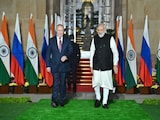In his book Seeing Like a State, James C. Scott reminds us that modern states rely on simplification, of forests into timber, of people into populations, to govern effectively. The census is perhaps the most paradigmatic of these technologies. It is not just an exercise to record facts. It rather renders societies “legible”, abstracting lived complexity into structured datasets for administration, control, and policy design. India's forthcoming census, scheduled for 2027 after a 16-year gap, will not only reflect social and demographic transformations but also actively shape the institutional architecture of governance in the decades ahead.
After prolonged delays, partly due to the COVID-19 pandemic and partly due to debates over caste enumeration, India is now preparing to embark on one of its most complex statistical exercises yet. However, the stakes are unusually high this time. This census will not just count people. It will enumerate caste across the country for the first time since 1931. It will do so in a vastly different India, one that is digitally administered, politically assertive, and socially more aware of its entitlements than ever before.
The 1871 Census
As Bernard Cohn and Nicholas Dirks have shown, the British-administered 1871 census did more than merely record caste. It institutionalised it. It froze fluid and locally contingent jatis (castes) into discrete, pan-Indian categories. The colonial census created what Dirks famously called “the ethnographic state”. Bureaucratic legibility, in this case, reified and restructured India's social order.
Thus, enumerating caste is not merely a matter of asking individuals to self-identify. Castes comprise thousands of regionally specific jatis, many with overlapping or ambiguous nomenclature.
Standardising this data across districts, states, and languages requires a sophisticated classification architecture, akin to building a dynamic ontology rather than a static taxonomy. Moreover, matching these self-ascribed caste identities with constitutionally recognised categories, Scheduled Castes, Scheduled Tribes, and Other Backward Classes, introduces a further layer of administrative complexity.
There is also the problem of intent. While the Centre has clarified that the caste data may not be immediately aggregated into an umbrella OBC count or linked to reservation entitlements, enumeration itself is a constitutive act. To be counted is to be recognised. To be omitted is to be invisibilised. As scholars of statecraft have long argued, enumeration creates the basis for claims-making. Even if not linked to policy immediately, the availability of disaggregated caste data will inevitably reframe political demands.
The Bihar And Karnataka Censuses
The experiences of Bihar and Karnataka serve as instructive case studies. Bihar's caste survey, conducted in 2023, demonstrated the feasibility of a state-level exercise grounded in administrative pragmatism. It revealed that OBCs and Extremely Backward Classes comprised over 60% of the state's population, data that reinforced calls for proportional distribution of state resources.
Karnataka's experience has been more contested. Its long-pending caste census, submitted to the state government in 2024, remains unreleased amid political uncertainties. Questions over methodological consistency, data integrity, and the implications for existing quotas have impeded consensus. These divergent outcomes point towards a key insight. Caste enumeration is as much about institutional design and procedural transparency as it is about data accuracy. Without clarity on the normative end-use of data, enumeration risks becoming politically volatile and administratively ambiguous.
The Population Question
Beyond caste, the census has direct constitutional implications for electoral redistribution. Article 82 of the Indian Constitution mandates the redrawing of Lok Sabha and state assembly constituencies after every census. This exercise, i.e. delimitation, has been suspended since 1976 to avoid penalising states that successfully reduced fertility rates. But the suspension is set to lift after the first census conducted post-2026, placing the 2027 enumeration squarely at the centre of India's next political reorganisation.
This raises difficult questions. Population growth has been uneven across states. Southern and some Northeastern states have stabilised or declined demographically, while northern and central states, particularly Uttar Pradesh, Bihar, Madhya Pradesh, and Rajasthan, have continued to expand. A purely population-based seat redistribution could significantly shift parliamentary power northwards, raising concerns over the federal balance. This could also strain the political compact between demographically progressive and populous states, sharpening regional anxieties and fuelling mistrust.
An Instrument Of Sovereignty
Further, India's international border regions - Assam, West Bengal, Jammu & Kashmir, and the Northeast - pose additional demographic challenges. These regions have witnessed complex migration patterns, both internal and transnational. In the absence of recent data, narratives around infiltration, identity, and entitlement have flourished without empirical grounding. A credible, up-to-date census can serve as a corrective, but only if handled with methodological precision and communicative restraint. Here, too, enumeration is not neutral; it becomes an instrument of sovereignty, legitimacy, and social belonging.
Thus, the census forms the backbone of India's statistical infrastructure. It feeds into the National Sample Survey, the Socio-Economic and Caste Census, the National Family Health Survey, and numerous state-level databases. Delays in the census have rendered many of these exercises misaligned with current realities. We no longer have a reliable estimate of the urban-rural population ratio, poverty incidence, migration patterns, or regional consumption profiles. Without this baseline, development policy becomes speculative rather than evidence-based. To this end, conducting a census was very necessary.
Thus, India's 2027 census will reflect more than just the demographic change. It will lead to significant changes. Delimitation and reservation of women in parliament will just be a start. It will shape how rights are negotiated, how resources are distributed, and how democracy is imagined.
(Aditya Sinha writes on macroeconomic and geopolitical issues)
Disclaimer: These are the personal opinions of the author















